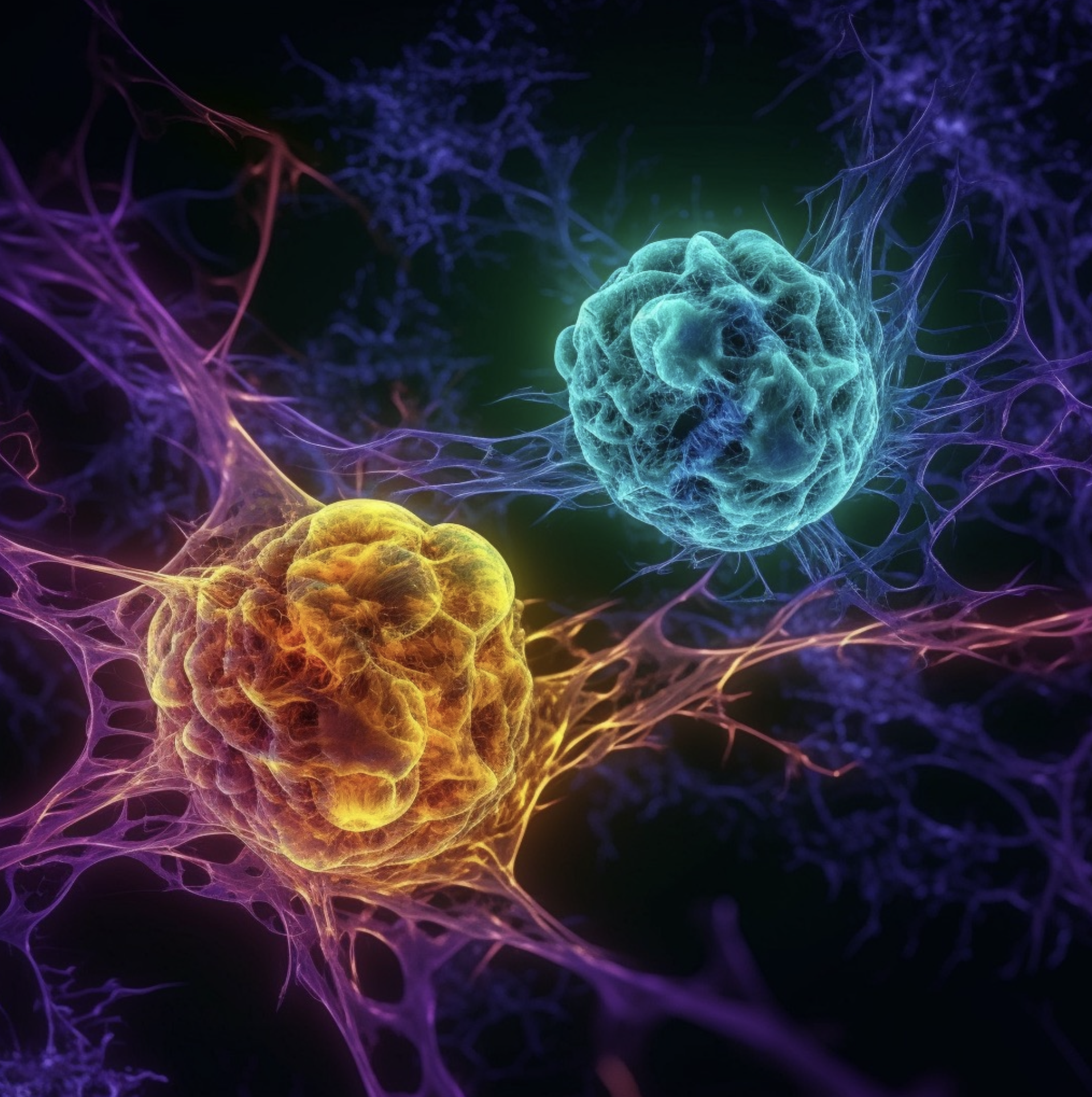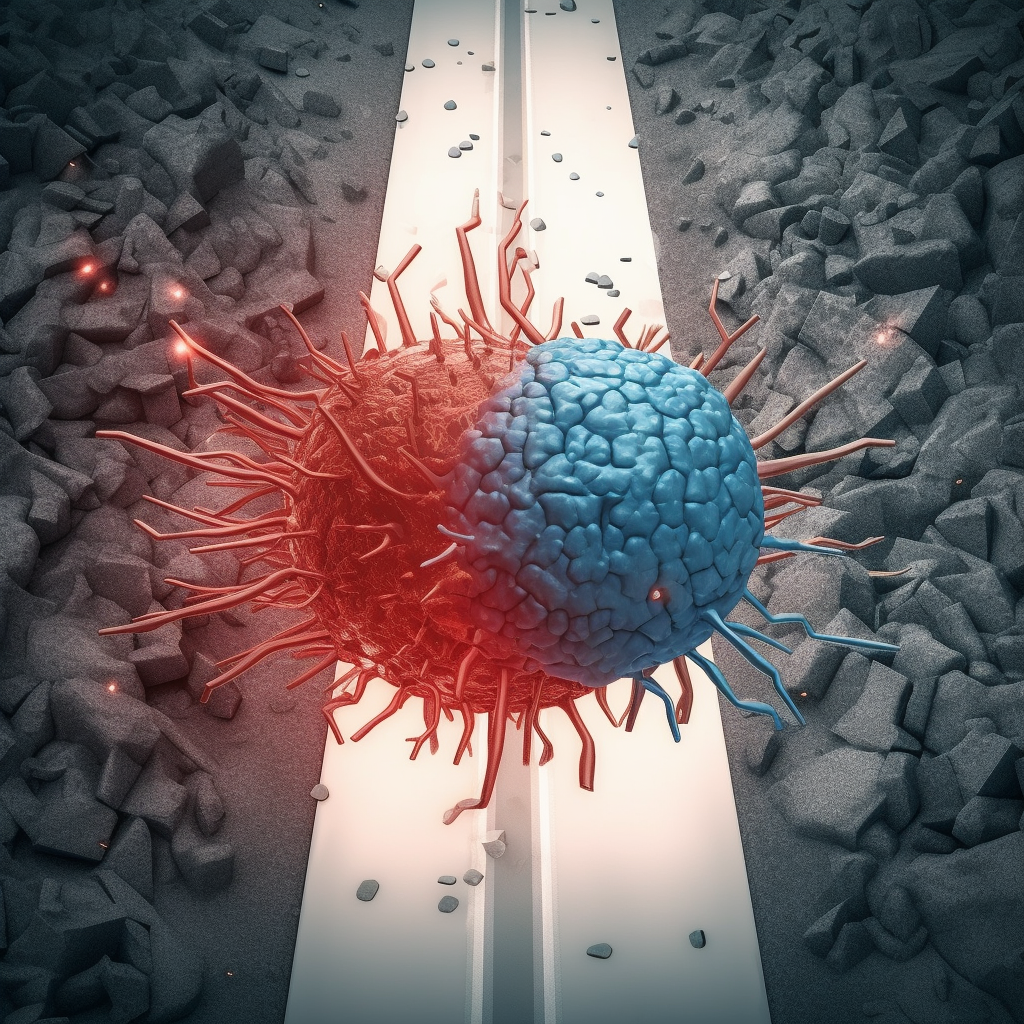Research
Lineage Plasticity and Histological Transformation Mediate Resistance in Cancer
Our research focuses on developing computational methods to study lineage plasticity and particularly histological transformation as a mechanism of acquired resistance in cancer.
Lineage plasticity is the ability for a cell to change its phenotypic state or identity under evolutionary pressure. This broad concept normally takes place in regenerative or developing tissue, but is hijacked by tumor cells to adapt to new metastatic sites, evade the immune system, and gain resistance to targeted therapies.
The most overt example of tumor plasticity is histological transformation, where tumor cells under therapeutic pressure change to a completely different cancer type that is independent of the originally targeted gene program.
Applying Single-Cell Technologies to Lung and Prostate Cancer as Parallel Cancer Models of Neuroendocrine Transformation
A classic example of histological transformation is the transition from adenocarcinoma (adeno) to a more aggressive neuroendocrine (NE) histology. This phenomenon arises across multiple cancer types but has particularly increased risk in lung and prostate following RB1 and TP53 loss as an escape from inhibition of EGFR (and other driver mutations) and androgen respectively. This transformed NE cancer has is more aggressive than either its adeno or classical NE counterparts, with worse survival following transformation and an optimal treatment strategy that remains unknown. An additional problem is that transformation often results in intra-tumoral heterogeneity with both adeno and NE cancer coexisting within the same tumor. These combined histology tumors complicate the treatment strategy because we often need to treat both cancer types at once. A challenge to understanding this disease has been a reliance on sequencing the bulk tumor, which can only estimate the average signal. We are therefore interested in using single-cell technologies that can isolate and parse the discrete intratumoral populations generated under plasticity. Our goal is to develop and apply computational methods in single-cell technologies to identify factors driving plasticity using a comparative genomics approach across different cancer types, including lung and prostate cancer under RB1 and TP53 loss. Critically, we find that tumor plasticity is a generalized phenomenon that we can exploit, where findings in one disease can inform findings in another, with the potential for repurposing drug targets.
Lung
Prostate
Single-cell technologies demand computational innovation.
While single-cell sequencing and other technologies have been powerful tools to dissect cancer evolution, they produce sparse, high-dimensional, high-scale datasets that present a number of statistical challenges that demand computational innovation. Our multidisciplinary approach uses graph-based, probabilistic modeling, topological data analysis, and both linear and deep learning approaches to build interpretable frameworks that reveal how tumor plasticity derails normal physiology and generates diverse cell populations that interact to mediate tumor progression over time.
Building a quantitative model of plasticity lends insight into the underlying machinery driving the early stages of histological transformation in prostate cancer, …
Instead of a simple switch between binary cell states, our work and others’ have shown that adeno to neuroendocrine transformation is a complex process where cancer cells undergo progressive early and late stages of plasticity both before and after NE transformation. To lend insight into the underlying machinery driving this process, we have pioneered multiple graph-based methods (using random walks, Markov absorption, diffusion maps) to quantitatively model plasticity during the early and late stages of histological transformation.
As an example, we leveraged time-course experiments of prostate cancer organoids and mice following RB1 and TP53 deletion to explore the early stages of histological transformation. It is largely thought that prostate cancer is derived from luminal epithelial cells that are androgen responsive, which is why the cornerstone of therapy is androgen deprivation. Following mutation, these luminal-derived cancer cells undergo progressive changes in plasticity, starting with a shift to a basal-like or even mesenchymal state that have decreasing androgen sensitivity. However, further transformation to a neuroendocrine state does not take place unless the cancer cells are orthotopically transplanted into a mouse host, suggesting not only cell-intrinsic capacity for plasticity, but also environmental factors that accelerate this process.
We found that during the early stages of histological transformation, plasticity manifests as promiscuous expression of multiple lineage specific gene programs and we can quantify this phenotypic mixing using graph-based methods (e.g. random walk classification, Markov absorption, diffusion maps) as a proxy measure for plasticity. We can then use this plasticity measure to identify highly correlated gene programs that potentially represent drivers of this process. This strategy pinpointed a chain of events starting with FGF-FGFR interactions, JAK/STAT signaling, IFN response and inflammation, with combined treatment with JAK and FGFR inhibition successfully reversing the early stages of plasticity and restoring original sensitivity to androgen inhibition (Chan, et al. Science, 2022).
the more advanced stages of histological transformation in lung cancer, …
We are also interested in studying the more advanced stages of plasticity under RB1 and TP53 loss by sequencing patient tumors that have undergone SCLC transformation. We previously studied targeted DNA sequencing of bulk tumors with concurrent EGFR/RB1/TP53 mutations at increased risk of transformation and identified whole genome doubling and APOBEC hypermutation enriched in tumors that ultimately transformed, even prior to the transformation event itself, suggesting possible involvement in the initiation of plasticity (Offin, Chan, et al. J Thor Onc, 2019). However, we found no significantly recurrent focal mutations, leading us to wonder whether non-mutational drivers of plasticity exist.
We therefore sought to study SCLC transformation using scRNA-seq. However, we first needed to establish the baseline heterogeneity of SCLC arising de novo to serve as a control. Previous studies had identified several transcriptional subtypes of de novo SCLC that included classical NE, as well as variant and non-NE subtypes that have increased metastasis and chemoresistance (Rudin, et al. Nat Rev Cancer 2019, Gay, et al. Cancer Cell, 2021). However, these canonical subtypes had not been studied in patients at single-cell resolution. We created a single-cell atlas of de novo SCLC that not only captured these canonical subtypes, but also identified a non-canonical PLCG2-high SCLC phenotype that is pro-metastatic, recurrent across patients, and predicts worse overall survival (Chan, et al. Cancer Cell, 2021). We also characterized the immune microenvironment of SCLC and found a pro-fibrotic myeloid population that is particularlyu associated with the PLCG2-high SCLC phenotype (Chan, et al. Cancer Cell, 2021).
Having established the baseline heterogeneity of de novo SCLC as a control, we could now study the heterogeneity of SCLC transformation. Compared to de novo, we found that transformed SCLC is enriched for these variant and non-NE subtypes that may explain worse clinical outcomes. This transformed SCLC, particularly the non-NE subtypes, display IFN response and inflammation similar to what we saw in prostate cancer, suggesting that plasticity is a general phenomenon that we can exploit using a comparative genomics approach, with the potential for repurposing drug targets.
and other types of histological transitions beyond neuroendocrine such as squamous transformation.
In addition to NE, another histological transformation that can take place in lung cancer is the switch to squamous histology, which has been found to confer resistance to both KRAS and EGFR inhibition at a rate that exceeds even small cell transformation (Schoenfeld, Chan, et al. Clin Cancer Res, 2021). Like small cell, this process also arises across different cancer types and results in adenosquamous tumors that have increased metastasis and worse survival than either adeno or classical squamous alone. Squamous transformation can be induced in mice following SOX2 overexpression and loss of NKX2-1 and LKB1 (Mollaoglu, et al. Immunity 2018), though it remains unclear how prevalent this mechanism is in patient tumors and whether other mechanisms of plasticity exist.
Additional questions about histological transformation remain
It remains unclear what additional epigenetic and environmental factors drive both the early and late stages of histological transformation . To address these questions, we will develop machine learning methods that integrate cutting-edge technologies (single-cell epigenetic profiling, lineage tracing, spatial imaging, cell-free DNA sequencing). Join us as we explore the underlying machinery of histological transformation and even other forms of lineage plasticity across different cancer types, with the overarching goal of identifying new therapies and improving outcomes for our patients.












